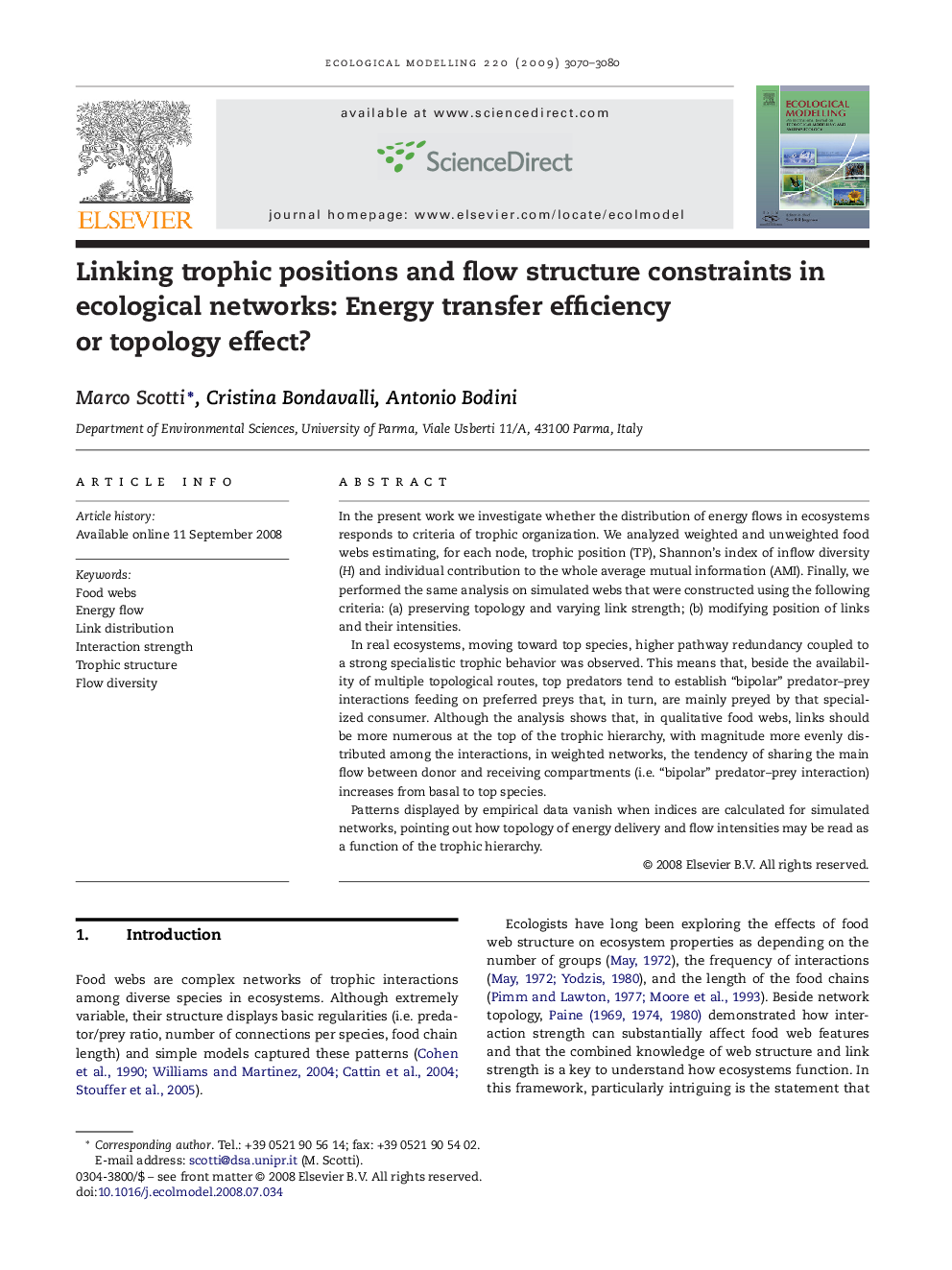| Article ID | Journal | Published Year | Pages | File Type |
|---|---|---|---|---|
| 4377646 | Ecological Modelling | 2009 | 11 Pages |
In the present work we investigate whether the distribution of energy flows in ecosystems responds to criteria of trophic organization. We analyzed weighted and unweighted food webs estimating, for each node, trophic position (TP), Shannon's index of inflow diversity (H) and individual contribution to the whole average mutual information (AMI). Finally, we performed the same analysis on simulated webs that were constructed using the following criteria: (a) preserving topology and varying link strength; (b) modifying position of links and their intensities.In real ecosystems, moving toward top species, higher pathway redundancy coupled to a strong specialistic trophic behavior was observed. This means that, beside the availability of multiple topological routes, top predators tend to establish “bipolar” predator–prey interactions feeding on preferred preys that, in turn, are mainly preyed by that specialized consumer. Although the analysis shows that, in qualitative food webs, links should be more numerous at the top of the trophic hierarchy, with magnitude more evenly distributed among the interactions, in weighted networks, the tendency of sharing the main flow between donor and receiving compartments (i.e. “bipolar” predator–prey interaction) increases from basal to top species.Patterns displayed by empirical data vanish when indices are calculated for simulated networks, pointing out how topology of energy delivery and flow intensities may be read as a function of the trophic hierarchy.
